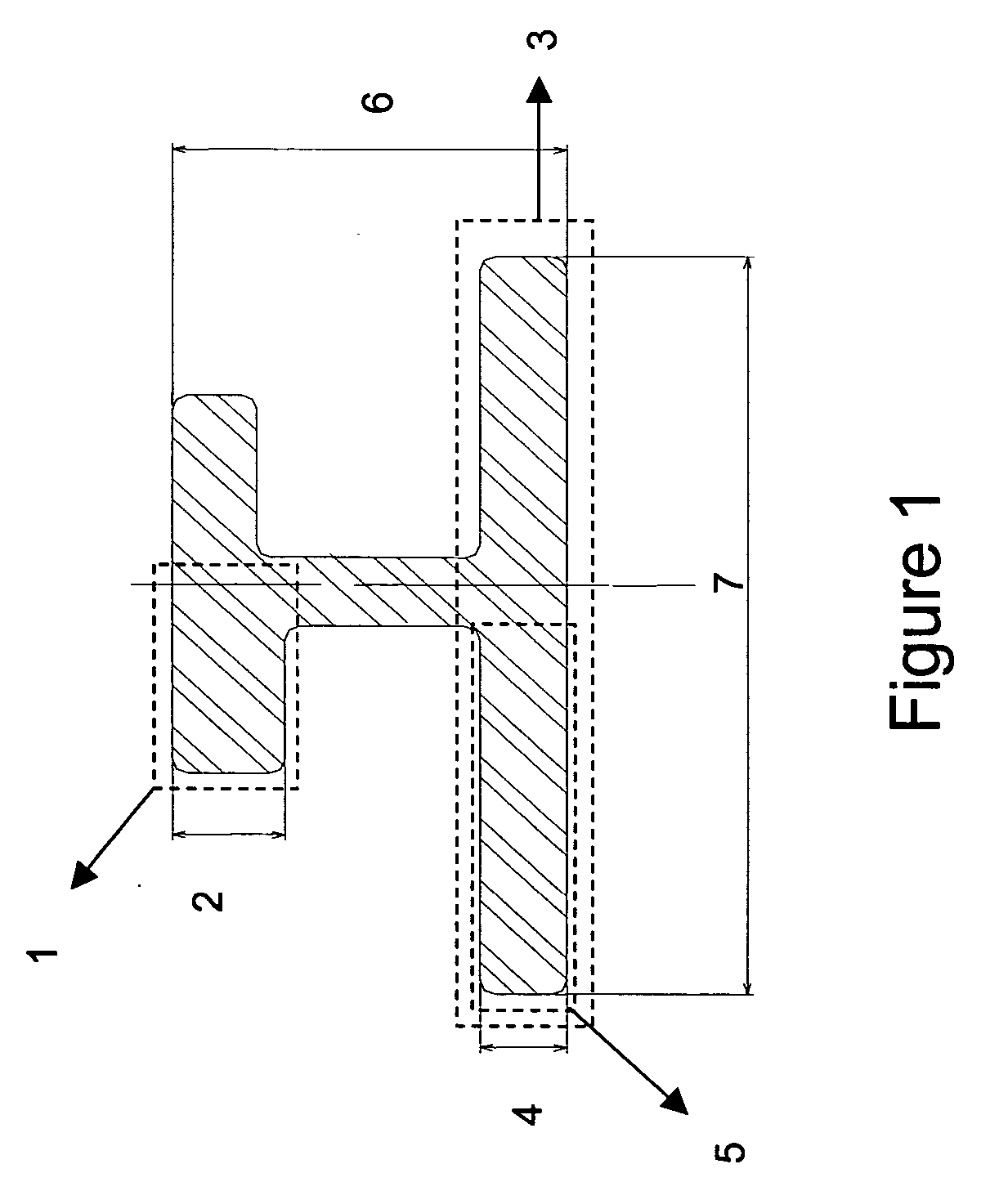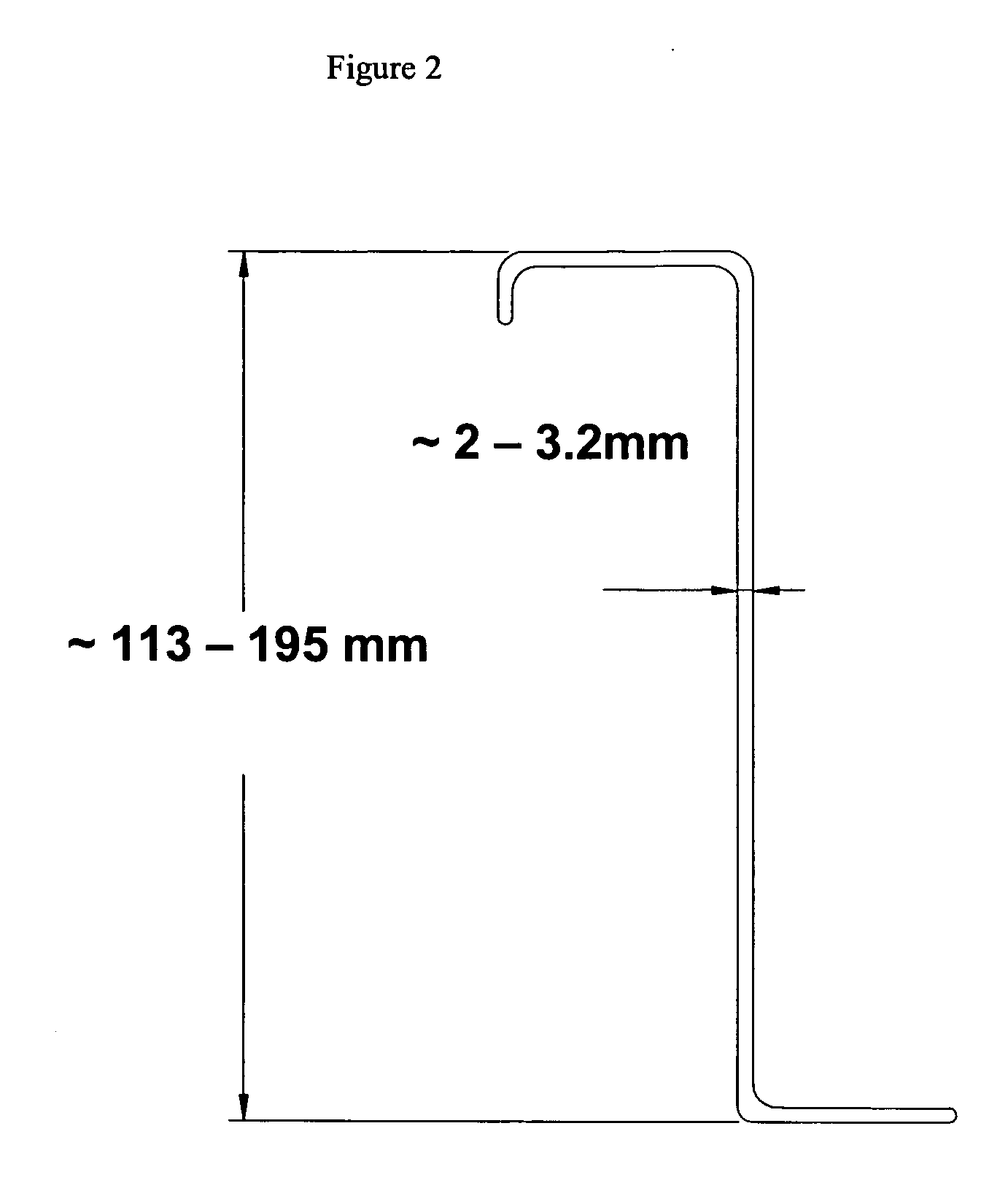Products made of Al-Zn-Mg-Cu alloys with an improved compromise between static mechanical characteristics and damage tolerance
a technology of static mechanical characteristics and damage tolerance, which is applied in the field of al-zn-mg-cu alloys, can solve the problems that certain required properties generally cannot be optimized at the same time independently of one another, and achieve high static mechanical strength
- Summary
- Abstract
- Description
- Claims
- Application Information
AI Technical Summary
Benefits of technology
Problems solved by technology
Method used
Image
Examples
example 1
Semi-continuous extrusion billet with a diameter of 291 mm were cast (alloy A), with the composition indicated in Table 1. These billets were homogenized in two steps: 1) 13 hours at 460° C.
2) 14 hours at 470° C.
TABLE 1AlloyZnMgCuFeSiZrTiMnA6.751.92.60.080.050.120.030.01
The Cu, Mg and Zn content was determined by chemical analysis after dissolution of a part of the sample, while the other elements were determined by X-ray spectroscopy on the solid.
“I” sections (thickness of the order of 17 mm to 22 mm, width and height of the order of 70 mm to 170 mm) were extruded from scalped billets with a diameter of 270 mm, at a die temperature of between 401 and 415° C., at a rate of about 0.5 m / mm. The sections were put in solution by increasing the temperature continuously for 4 hours up to 481±3° C., and then holding this temperature for 6 hours. The next step was an over-annealing treatment to obtain products in the T76 state. Over-annealing was done in two steps: firstly at 120° C...
example 2
An alloy was made with the composition indicated in Table 5. Extrusion billets were cast with a diameter of 410 mm. Homogenisation conditions were the same as in example 1. The diameter of the billets obtained after scalping was 390 mm. They were extruded at a temperature between 413 and 425° C. (measured at the die and at the container) with an output speed of 0.65 m / mm, in flats with a section of 279×22 mm.
TABLE 5AlloyZnMgCuFeSiZrTiCrMnK6.781.912.490.080.050.110.030.000.01
The products were then put into solution with a temperature rise in 35 minutes up to 479±2° C. with a plateau of 4 hours at this temperature. Quenching was done in cold water. The flats were then tensioned with a permanent elongation of between 1.5 and 3%. Annealing was done in two steps: 6 hours at 120° C.+8 hours at 160° C.
The results of the tension test (on a circular test piece with a diameter of 10 mm, taken from the beginning and from the end of the section, at mid-thickness and at mid-width) are give...
example 3
Sections with different geometries were extruded starting from billets with composition A (see example 1). FIG. 2 shows the shape of these sections. The manufacturing process was similar to that described in example 1. Table 9 shows the static mechanical characteristics obtained for different annealing conditions. The first annealing step was still 6 hours at 120° C.
TABLE 9Duration of the 2ndannealing step atRm(L)Rp0.2(L)A(L)EXCOEXCO160° C.TEQ[MPa][MPa][%]surfaceT / 2 1 hour1.7763559511pittingED+ 2 hours2.7763460011pittingED+ 3 hours3.776326029pittingED 4 hours4.7162860111pittingED 8 hours8.7162159310pittingEB16 hours16.7159755910pittingEA / EB32 hours32.7154148211pittingEA / EB
Temper T6 is close to the 6 hours point at 120° C.+1 h at 160° C.
Table 10 shows some compromises between toughness and static mechanical characteristics for some points corresponding to T7x states:
TABLE 10Duration of2nd annealing step8 h12 h24 hTEQ8.71 h12.71 h24.71EXCO: surfacePittingPittingPittingEXCO: T / ...
PUM
| Property | Measurement | Unit |
|---|---|---|
| Temperature | aaaaa | aaaaa |
| Temperature | aaaaa | aaaaa |
| Temperature | aaaaa | aaaaa |
Abstract
Description
Claims
Application Information
 Login to View More
Login to View More - R&D
- Intellectual Property
- Life Sciences
- Materials
- Tech Scout
- Unparalleled Data Quality
- Higher Quality Content
- 60% Fewer Hallucinations
Browse by: Latest US Patents, China's latest patents, Technical Efficacy Thesaurus, Application Domain, Technology Topic, Popular Technical Reports.
© 2025 PatSnap. All rights reserved.Legal|Privacy policy|Modern Slavery Act Transparency Statement|Sitemap|About US| Contact US: help@patsnap.com



